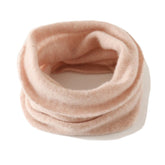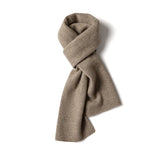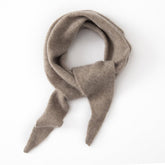How to Wash Silk Sheets?
How to Wash Silk Sheets?
Keep your silk sheets soft and vibrant by washing them correctly. Hand-washing is the best method, but machine washing can work with care.
Proper washing helps silk retain its natural shine and smoothness for years. Once you know the right technique, you can clean silk sheets and pillowcases without damage. Here’s what you need to know to properly care for your silk bedding.
Preparation
How do you wash silk sheets effectively? By preparing in advance. Take some time to prep upfront, so you have the best chance of keeping your silk sheets and pillowcases in top condition.
1. Read the Care Label
The care label provides specific washing instructions from the manufacturer, which are tailored to the fabric’s specific needs. Read and follow the care instructions to prevent damage and keep the sheets in good condition.
2. Spot Test for Colorfastness
Spot testing checks whether the detergent and water cause the colors to run or fade, which can ruin the appearance of your silk sheets. Here’s how to do it:
- Choose a hidden corner of the sheet.
- Dampen the area with a small amount of water and detergent.
- Press a white cloth or paper towel against the damp area.
- Check the cloth for any color transfer.
- If there’s no color transfer, it’s safe to wash the sheets.
3. Gather Necessary Supplies
Use a detergent that’s gentle and free from harsh chemicals. Brands labelled for delicate fabrics are good options. Avoid using bleach or fabric softeners when washing silk, as they can damage the silk fibers.
You’ll also need a basin for hand-washing, a mesh laundry bag if you’re opting for a machine wash, and soft towels for drying the sheets without causing damage.
How to Hand-Wash Silk Sheets

Hand-washing silk sheets is the safest method to clean them and maintain their quality. Here’s how to wash silk bedsheets by hand.
- Fill a Basin with Lukewarm Water: Use lukewarm water or cool water. Do not use hot water as heat can damage your delicate silk sheets.
- Add a Small Amount of Gentle Detergent: Use a laundry detergent designed for delicate fabrics or specially formulated for silk. Washing silk in detergents not made for delicates can damage your silk products.
- Gently Agitate the Sheets Without Twisting: Swish the sheets gently in the water to clean them. Be careful not to twist or wring them.
- Rinse Thoroughly with Cold Water to Remove Soap: Rinse the sheets until all soap residue is gone. Use cold water to help preserve the fabric’s color and texture.
How to Wash Silk Sheets in Washing Machine?

If you prefer to use a washing machine, follow these steps to protect your silk bedding.
- Use a Mesh Laundry Bag to Protect Sheets: A mesh washing bag will help protect your silk sheets from excess friction or snagging.
- Select a Delicate Cycle with Minimal Agitation: Choose a delicate or gentle cycle on your washing machine to prevent damage to the silk fibers.
- Use Cold Water Setting to Prevent Shrinkage: Always use cold water when washing silk in the machine. This will help avoid shrinkage and maintain the fabric’s integrity.
How to Dry Silk Sheets?
Knowing how to dry silk sheets correctly maintains their quality and longevity. Drying them the wrong way can cause damage, distortion, or fading. Here’s what to do:
Air Drying
Air drying is the best way to dry silk sheets. It helps preserve the fabric’s natural properties and prevents damage.
- Avoid Direct Sunlight: Sunlight can cause fading and weaken the fibers over time, so dry your sheets in a shaded area.
- Lay Sheets Flat: Lay the sheets flat on a clean, dry towel. This helps the sheets retain their shape and dry evenly. Flip the sheets occasionally to help them dry even faster.
Use a Dryer
If air drying isn’t an option, you can put your silk sheets in the dryer, but be careful. Follow these steps to minimize the risk of damage.
- Set the Dryer on Low Heat: Use the lowest heat setting to dry your silk sheets. High heat can damage delicate fibers and cause shrinkage.
- Remove Sheets Quickly: Take the sheets out of the dryer as soon as they are dry. This helps prevent wrinkles and reduces the risk of over-drying, which can make the silk brittle.
Why Silk Sheets Need Special Care
Silk sheets are a lavish addition to any bedroom, but they need special attention. They are a significant investment, so learning how to wash silk sheets properly and care for them is a must.
Silk is Delicate and Prone to Damage
Silk is a delicate fabric that can easily be damaged if not handled correctly. The fine fibers can snag, tear, or lose their luster with rough treatment.
Sensitivity to Chemicals and Temperatures
Silk is highly sensitive to chemicals and high temperatures. Harsh detergents can break down the fibers, which can lead to weakening and discoloration. High temperatures can misshape and shrink silk.
Preserves Fabric Quality and Extends Lifespan
Proper care of silk sheets preserves their lavish quality and extends their lifespan. Here are some tips to ensure that your silk sheets remain soft, shiny, and comfortable:
- Iron Silk Sheets: Ironing your silk sheets (carefully!) can help keep them smooth and wrinkle-free.
- Use a Low Heat Setting: When ironing, always use a low heat setting. High temperatures can scorch or weaken the silk.
- Iron on the Reverse Side: To maintain the natural sheen of your silk sheets, iron them on the reverse side. This helps prevent any direct heat damage and keeps the surface looking smooth and shiny.
- Store in a Cool, Dry Place: Keep your silk sheets in a cool and dry place. Excess moisture and heat can cause damage.
- Avoid Plastic Bags: Don't store your silk sheets in plastic bags – use breathable fabric bags instead. Plastic can trap moisture, which may lead to mildew or mold. Fabric bags allow air to circulate, keeping your sheets fresh.
How Often Should You Wash Silk Sheets?
According to our team at Slipintosoft, silk sheets should be hand washed every 2 weeks. This frequency is the ideal balance between keeping them clean and preventing excessive wear from washing too often. You may need to wash silk bedding more frequently because of hot weather, illness, or if the sheets and pillowcases are being used by someone with allergies or sensitive skin.
FAQs
Can You Steam Silk Sheets?
Yes, you can steam silk sheets. Steaming is a gentle way to remove wrinkles without using direct heat from an iron. Use a handheld steamer or a steam iron on a low setting. Hold the steamer a few inches away from the fabric to avoid adding too much moisture. Steaming also helps refresh your sheets and maintain their softness and sheen.
Can Silk Sheets Shrink When Washed?
Yes, silk sheets can shrink when washed, especially if they’re exposed to high temperatures. To prevent shrinking, wash your silk sheets in cold water on a gentle cycle. Avoid using hot water or high heat in the dryer, as these can make the fibers contract. Line drying or laying them flat to dry is the best way to preserve their original size and shape.
Can Silk Sheets Fade When Washed?
Yes, silk sheets can fade when washed. It’s more common if they’re exposed to harsh detergents or hot water. To maintain their vibrant color, always use a gentle detergent and always use cold water to wash silk. Avoid direct sunlight when drying, which can also cause fading. Drying indoors or in a shaded area is best to preserve the rich colors of your silk sheets.










